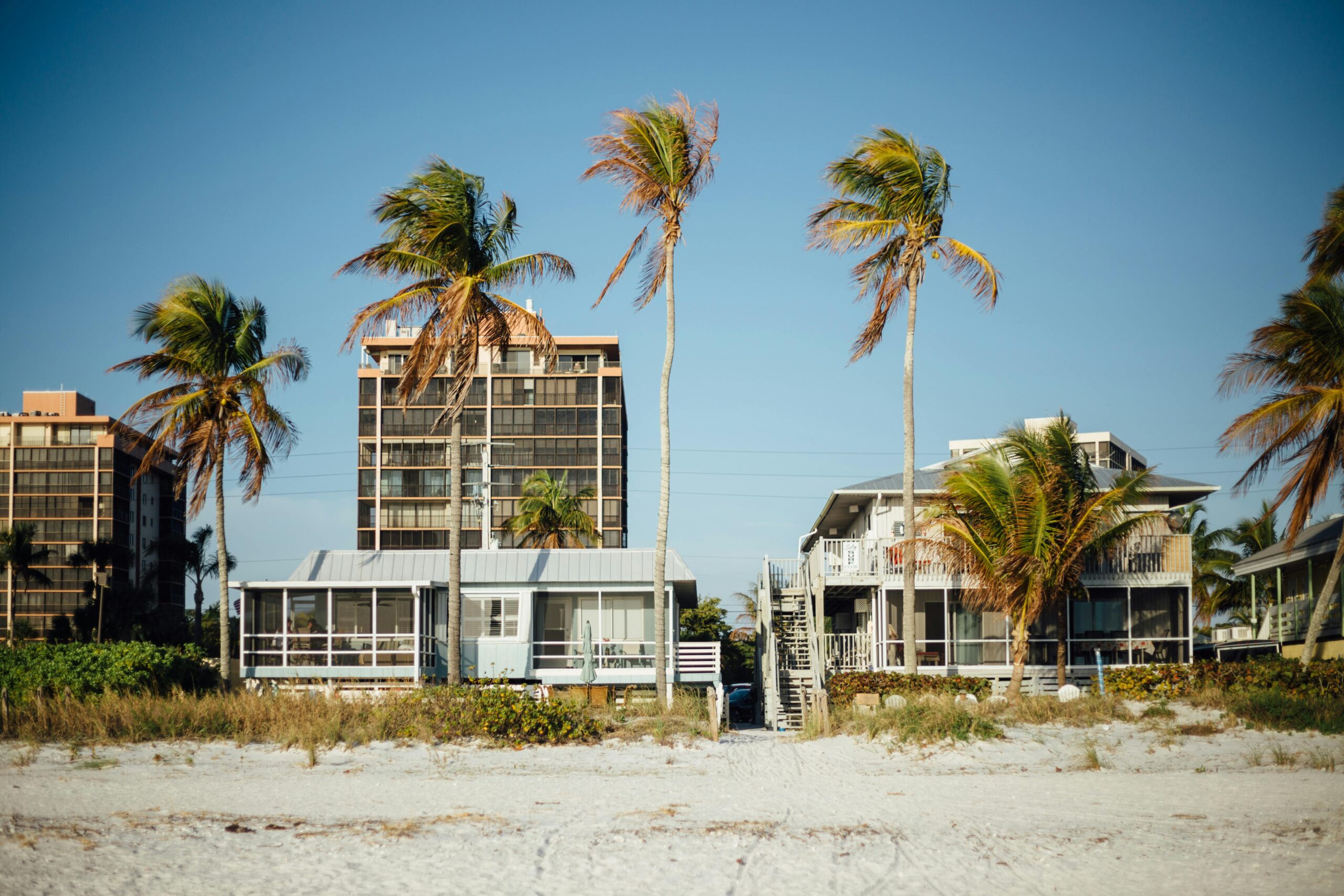In a global economy where real estate and geopolitics are deeply intertwined, escalating trade tensions can ripple far beyond stock markets and manufacturing—affecting even the palm-tree-lined boulevards of Miami, the high-rises of Manhattan, and the ocean-view condos of California. With the U.S. facing renewed trade disputes under President Donald Trump’s administration, particularly with China, Canada, and the European Union, many are beginning to ask: What happens to U.S. coastal property markets if these tensions continue to rise?
From foreign buyer behavior to supply chains and tourism, rising trade tensions have the potential to reshape demand, costs, and confidence in America’s most desirable—and often most vulnerable—property regions.
1. Foreign Buyer Demand Could Soften
Historically, coastal real estate markets have benefited significantly from foreign investment. Cities like Miami, New York, San Francisco, and Los Angeles have long attracted wealthy buyers from China, Russia, Canada, and the Middle East. Luxury condos, beachfront mansions, and high-rise investment properties have often been snapped up as second homes, safe havens, or profitable rental assets.
However, rising trade tensions often lead to strained diplomatic ties and retaliatory measures, including increased scrutiny on cross-border investments. For instance, during Trump’s first administration, Chinese investment in U.S. real estate declined sharply following tariffs, tightened capital controls in China, and new national security reviews by U.S. regulators. If trade tensions continue to escalate, we may see further declines in foreign interest—especially from countries targeted by U.S. trade policies.
This could reduce demand for high-end coastal properties that depend heavily on international capital, leading to longer sales cycles, price softening, or increased competition among domestic buyers.
2. Luxury Markets May Take the Biggest Hit
U.S. coastal cities often have luxury segments that are overbuilt and priced beyond the reach of most local buyers. These markets—particularly in Manhattan, Beverly Hills, and Miami Beach—are where foreign investors play a disproportionately large role.
In times of geopolitical harmony, these luxury properties are seen as status symbols and safe investments. But in times of tension, particularly when foreign capital becomes harder to move due to sanctions or investment restrictions, this demand can quickly dry up.
A lack of international demand often leaves developers holding excess inventory, leading to price reductions, incentives, and eventually, slower construction activity. In this way, trade tensions can directly influence the trajectory of luxury coastal developments, some of which rely on foreign presales for financing.
3. Supply Chains and Construction Costs Could Rise
Trade tensions don’t just affect buyers—they impact builders too. Many of the materials used in U.S. construction, especially in coastal areas prone to hurricanes or flooding, are imported. Steel, aluminum, lumber, tile, cabinetry, and HVAC systems often come from countries like China, Canada, and Mexico.
Tariffs or import restrictions can significantly increase the cost of these materials. For developers in high-cost markets like California or Florida, where margins are already thin, rising input costs can delay or derail projects. In the short term, this may push up prices for new coastal housing. In the long term, it may reduce overall housing supply—particularly in the already-tight affordable housing segment.
Additionally, uncertainty in trade policy makes it harder for developers to budget and plan ahead, which can slow the pace of new projects and infrastructure improvements along the coast.
4. Tourism-Driven Rental Markets Could Suffer
Another important factor is the impact of trade tensions on tourism. Coastal real estate markets like Miami, Honolulu, and San Diego often rely heavily on international tourists who rent vacation homes, stay in short-term rentals, or even buy property after visiting.
Trade tensions, particularly those that involve travel restrictions, visa complications, or retaliatory tariffs, can reduce tourist arrivals. During Trump’s first term, for instance, visits from Chinese nationals declined due to a mix of trade conflict and immigration policy changes. This decline hurt short-term rental demand in tourist-heavy coastal cities.
If global travelers begin to avoid the U.S. due to perceived hostility, unpredictability, or restrictions, this could hurt vacation rental yields and investor interest in Airbnb-style properties. Real estate investors who banked on high occupancy and premium pricing could find themselves squeezed.
5. Currency Exchange Rates Add Volatility
Trade tensions often impact currency exchange rates. When the U.S. imposes tariffs or pulls out of trade agreements, global markets react—and foreign currencies can weaken against the U.S. dollar.
For example, a rising dollar—often the result of protectionist policies or perceived economic strength—makes American real estate more expensive for international buyers. Even if they’re still interested in buying property in Miami or San Francisco, unfavorable exchange rates could lower their purchasing power, forcing them into smaller properties or alternative markets.
On the flip side, currency fluctuations may benefit some U.S. sellers looking to reinvest globally, but the net effect on coastal demand is usually negative when the dollar is strong and foreign buyers pull back.
6. Regulatory Environment Could Tighten
In times of rising trade tensions, governments tend to scrutinize foreign investment more closely. The Committee on Foreign Investment in the United States (CFIUS) has increased its oversight of real estate transactions—particularly near sensitive infrastructure or military sites.
Though these regulations are focused on national security, they can slow down or block foreign deals, especially in high-profile coastal markets. This creates an additional barrier to investment that might cause potential buyers to redirect their money elsewhere—to Canada, Europe, or Australia, for example.
In addition, states and municipalities—especially those facing housing affordability issues—may introduce taxes or restrictions on foreign buyers, a move that could further dampen demand in areas already reeling from global uncertainty.
7. Long-Term Value Still Holds, But Risks Are Rising
Despite these challenges, U.S. coastal real estate remains attractive in many respects. Cities like New York and Los Angeles are global financial hubs with strong rental markets, cultural cachet, and institutional investment. Miami, Tampa, and San Diego continue to grow as tech, finance, and lifestyle destinations. Coastal markets also benefit from limited land availability and climate appeal, which tend to support long-term value.
However, if trade tensions persist or escalate, investors and developers must weigh geopolitical risks more heavily in their decision-making. Foreign buyers may shift their focus toward more politically stable or welcoming markets. Developers may adjust their sourcing strategies to account for tariffs and supply disruptions. And cities may need to reevaluate their dependence on foreign capital to fuel luxury developments.
Trade Policy Is Now a Real Estate Issue
It’s clear that trade tensions are no longer just a matter for diplomats and corporations—they’re a tangible influence on how, where, and why people buy and build property. For coastal U.S. real estate markets, rising trade tensions introduce a new layer of complexity that could impact pricing, inventory, investment flows, and tourism-driven demand.
Whether you’re a foreign investor eyeing a beachfront condo, a developer planning your next luxury tower, or a city hoping to attract international capital, the message is clear: Trade policy matters.
In an interconnected world, political shifts across oceans can send waves crashing onto American shores—sometimes literally, often financially. For those involved in coastal real estate, staying informed about trade developments and adjusting strategies accordingly will be crucial in navigating this new era of uncertainty.







